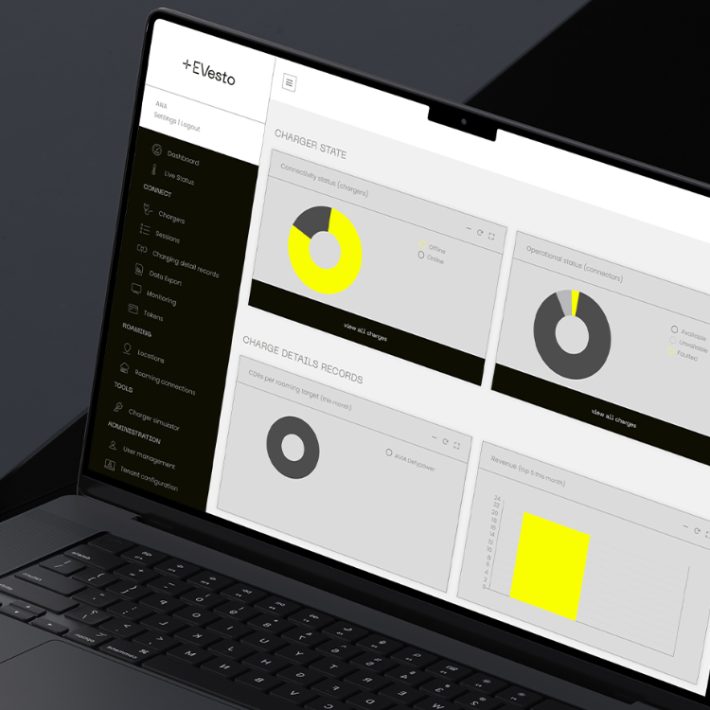Energy Management Systems and the Future of Mobility
16 January 2024
The advancement of electric mobility heralds a new era in transportation, intertwining technology and sustainability. Central to this transformation is the role of Energy Management Systems (EMS) and Charge Point Management Systems (CPMS), such as EVesto, which are pivotal in orchestrating this shift. This blog will explore the essence of EMS, its integration with Open Automated Demand Response (OpenADR), and the crucial role of EMS in optimizing electric mobility. We will delve into how these systems streamline energy usage, enhance grid stability, and shape the future of electric transportation.

Understanding Energy Management Systems (EMS)
An Energy Management System (EMS) is a technology platform used to monitor, control, and optimize the performance of energy generation and consumption. The primary objective of an EMS is to achieve and maintain optimum energy procurement and utilization throughout an organization to minimize energy costs and environmental impact while ensuring continuous energy supply.
The connection between OpenADR, CPMS, and electric mobility is crucial in modern energy systems. OpenADR provides a standardized framework for automated demand response, which is a key component of an EMS. It allows for the real-time and automated adjustment of energy consumption in response to grid conditions, contributing significantly to grid stability and efficiency.
In the case of CPMS, integrating OpenADR means that the charging of electric vehicles can be managed more dynamically and responsively. For instance, EVesto from Longship.io, as a CPMS, can utilize OpenADR standards to adjust charging schedules based on grid demands, effectively turning electric vehicles into grid-responsive assets. This helps balance the load on the grid and optimizes the energy costs for users.
Electric mobility, represented by the growing number of electric vehicles, introduces a significant and flexible load to the grid. Integrating CPMS like EVesto with OpenADR makes it possible to manage this load in a way that supports grid operations. For example, during high renewable energy generation or low demand periods, electric vehicles can be charged at maximum rates. Conversely, charging can be slowed down or paused during peak demand or low renewable generation.
This integration also supports the development of smart cities and sustainable energy practices. As electric vehicles become more widespread, their integration into the energy system becomes critical. CPMS, with OpenADR capabilities, can turn EV charging stations into intelligent energy assets, contributing to more sustainable and efficient energy utilization.
Harnessing Energy Management in Electric Mobility
Electric Mobility Solutions are revolutionizing the way we approach transportation, and at the heart of this transformation is the critical role of Energy Management Systems (EMS). EMS in electric mobility isn’t just about fuel efficiency; it’s about orchestrating the entire ecosystem of electric vehicles (EVs), charging stations, and energy resources. A smart EMS is pivotal in optimizing energy usage by employing advanced algorithms and cloud-based technologies. These systems consider various factors, such as the state of the electricity grid, the availability of renewable energy sources, energy pricing, and specific user requirements. This optimization is essential for balancing energy demand on the grid, especially as EV adoption surges.
Optimizing Charging Infrastructure with EMS
One of the key challenges in electric mobility is the efficient utilization of the EV charging infrastructure. EMS addresses this by optimizing existing charging stations, ensuring they do not overburden the power grid. By analyzing energy consumption patterns, renewable energy generation, and energy costs, EMS can maximize the efficiency of the charging infrastructure. This strategic approach helps minimize the need for expensive infrastructure upgrades and enhances the reliability and accessibility of EV charging stations.
Load Balancing and Grid Stability
EMS also plays a critical role in balancing load, which is crucial for preventing grid overload. By adjusting EV charging times to off-peak periods, EMS helps maintain grid stability and reliability. This strategy is particularly beneficial in optimizing renewable energy sources like wind and solar, aligning EV charging with times when renewable power generation is at its peak.
Charge Point Management Systems
A CPMS like EVesto is an advanced EMS component tailored to meet the needs of the electric mobility sector. It connects the electricity grid, charging stations, and EVs, providing charge point operators with seamless management and monitoring tools.
EVesto’s Role in Energy Management
The progression towards a greener future in electric mobility relies heavily on the seamless integration of EMS and electric vehicle chargers. EMS is the mastermind behind energy optimization, meticulously designing charging profiles that align with energy availability, grid demands, and sustainability goals.
EVesto operates at the heart of this energy ecosystem, providing critical data to EMS, which is then used to craft precise charging profiles. This collaboration is facilitated through EVesto’s robust API, which serves as the conduit for these profiles, transferring the strategic plans from EMS to the chargers’ doorstep.
By supplying essential data points collected from the CPMS, EVesto empowers EMS to create sophisticated and dynamic charging schedules. These schedules are then communicated back to the charger, ensuring that the flow of energy to the chargers is finely tuned to the conditions and requirements of the moment.
This intricate dance between EVesto and EMS exemplifies a partnership beyond simple data transfer; it’s a testament to the power of integrated technology solutions working in concert. For Charge Point Operators, this means access to a cutting-edge platform that provides data and acts on the intelligent strategies developed by EMS.
The impact of this functionality extends across the entire mobility sector. It enables a more robust and responsive charging infrastructure, which is fundamental for the growth of the EV ecosystem. As EVesto and EMS work together, they create a dynamic charging network that is efficient and adaptive to the changing energy management landscape.
As we look to the future, the role of EVesto in this energy dialogue is indispensable. It stands as an example of integration and efficiency, ensuring that the strategies devised by EMS are not just visionary but are brought to life, charge by charge, across a network of electric vehicles and charging stations.

